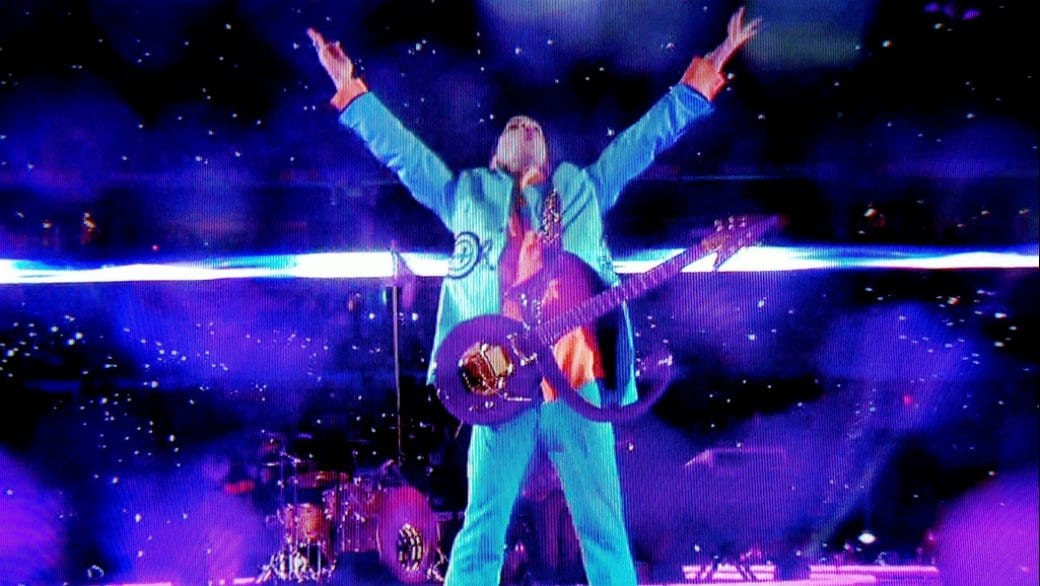“Am I black or white? Am I straight or gay?” Prince infamously sang in his 1981 song “Controversy.” He consistently transcended barriers of race, gender and sexuality throughout his storied career by asking questions, like those posed in the song, while simultaneously courting success. That was Prince’s genius.
Prince was found unresponsive in an elevator in his Paisley Park Estate and later pronounced dead on Thursday, April 21, 2016. He was 57. Like other game-changing queer icons before him, like Freddie Mercury and David Bowie, Prince broke into the mainstream conversation through his talent and ambition and became a dominant voice for the disenfranchised.
To mark his untimely passing, Daily Xtra looks at seven ways in which Prince’s career was very gay.
1. “Cream”
“Cream. Get on top,” are the lyrics sung over a harmony of sticky guitars that kick-start the chorus to the Purple One’s fifth chart-topping single. Legend has it he wrote “Cream” while staring at his own reflection in the mirror, and the ballsy track was recorded at his Paisley Park Studios. While it may be hard to imagine Prince as an insatiable bottom, it’s even harder to think of anything gayer than a song that, for all intents and purposes, is an homage to cum.
2. “Wonderful Ass”
Prince pledged his allegiance to ass in this ultra rare, unreleased track. Recorded in 1983, “Wonderful Ass” joins scores of songs that remain under lock and key, presumably hidden deep in his Paisley Park Estate. Over a simple disco-funk track that calls to mind 1984’s “Hey DJ” by World’s Famous Supreme Team, “Wonderful Ass” delivers some of the raunchiest lines in Prince’s catalogue — a tall order by any standard. “You know what I’m talkin’ about baby? I’m talkin’ about that ass. The revolution will be heard.” Three cheers for the revolution.
3. “Love Song”
By 1989, Prince and Madonna had secured their spots in the pop pantheon. Madonna was working with Patrick Leonard on Like a Prayer, an album that would later cement her critical credibility, while Prince was scoring the soundtrack for Tim Burton’s Batman. During development of the album, she teamed with Prince to record “Love Song” — a low-tempo track that made the album’s final cut and featured Prince on backing vocals. Prince and Madonna, both gay icons, used sexuality not only to entertain, but to push boundaries and lend volume to marginalized voices. Their collaboration made sense in more ways than one.
When His Purple Majesty set out to entertain, there were no half measures. Following many of his concerts, he would perform at secret aftershows, entertaining a select few until dawn. His collaborations with some of the world’s top gay icons were no exception. Sinead O’Connor, The Bangles, Kate Bush and Janelle Monáe are just some of the divas Prince collaborated with. But his performance with Beyoncé at the 2004 Grammys for a “Purple Rain” medley was perhaps his most legendary.
5. “Batdance”
Get the funk out. Prince’s soundtrack for Tim Burton’s stylish, coy Batman topped the charts for weeks. The video for “Batdance” from the soundtrack is a master class in camp, with Prince dressed as the nefarious Joker and commanding chorus lines of Vicki Vales, Batmans and Jokers. Choreography from the video was no doubt reinterpreted behind closed bedroom doors by gay children the world over.
6. Purple Rain
Released in 1984, Prince’s seminal Purple Rain was the soundtrack to the experimental, but massively successful film of the same name. The record spawned multiple singles that found themselves in heavy rotation in the gay circuit, including, “Let’s Go Crazy,” “When Doves Cry” and the title track and marked a decisive shift in Prince’s evolution as an artist. Purple Rain’s lavish styling, mammoth production values and commercial success not only put Prince on par with heavyweights like Michael Jackson, but teased a whole new audience of younger and aging queers alike.
Since his debut record For You in 1978, Prince cultivated an aesthetic that not only challenged, but helped redefine the status quo. His fashion sensibility combined elements of disco and new wave with vaudeville. His lace gloves, garter belts, leopard print guitar straps and purple stage costumes, that had become ubiquitous since the mid-’80s, were fodder for queer people globally. His raccoon-painted eyes, glossed, pouty lips and chiseled body that stared out at us from magazines, music videos and stages across the globe kept audiences guessing until the end.
RIP Prince. We’ll miss you.

 Why you can trust Xtra
Why you can trust Xtra


